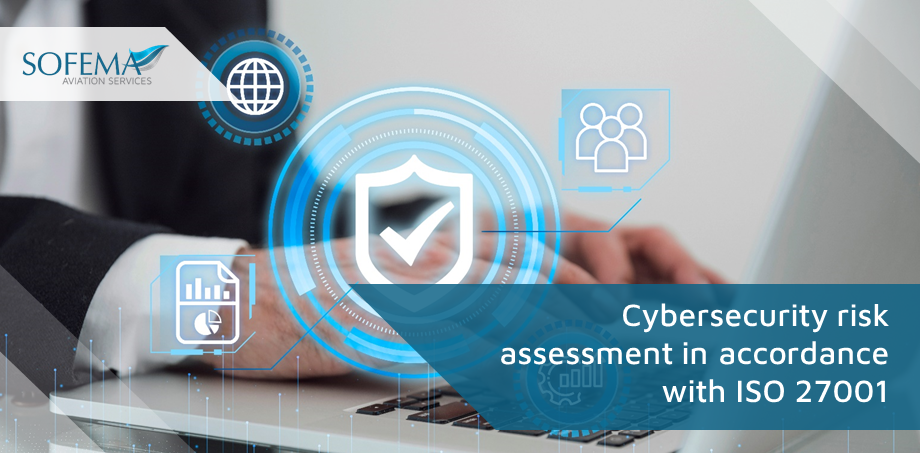Sofema Aviation Services (SAS) www.sasofia.com looks at the steps required to perform a cybersecurity risk assessment in accordance with ISO 27001 to ensure a structured and systematic process to identify, analyze, and evaluate risks.
Here’s a step-by-step guidance on how to conduct this assessment:
- Define the Risk Assessment Framework
- Develop a Methodology: Decide on the risk assessment methods, scales (for risk levels), and criteria for acceptance.
- Understand Legal and Regulatory Requirements: Ensure the methodology aligns with legal and regulatory obligations.
- Involve Stakeholders: Engage with key stakeholders to understand their views on acceptable risk levels.
- Identify the Scope
- Define the Boundaries: Clearly define the scope of the risk assessment, including systems, locations, and processes.
- Asset Identification: List all assets within the scope, including information, software, hardware, and services.
- Identify Threats and Vulnerabilities
- Threat Identification: Identify potential threats (both internal and external) to each asset.
- Vulnerability Assessment: Determine vulnerabilities in assets that could be exploited by the identified threats.
- Analyze Risks
- Risk Estimation: Estimate the level of risk considering the likelihood of a threat exploiting a vulnerability and the potential impact.
- Consider Existing Controls: Evaluate how current controls affect risk levels.
- Evaluate Risks
- Risk Evaluation: Compare estimated risk levels against risk criteria to determine which risks are acceptable and which require treatment.
- Prioritize Risks: Focus on risks with higher potential impact and likelihood.
- Risk Treatment
- Decide on Risk Treatment Options: These can include avoiding, transferring, mitigating, or accepting risks.
- Develop a Risk Treatment Plan: Outline actions, resources, responsibilities, and priorities for managing identified risks.
- Implement a Risk Treatment Plan
- Execute the Plan: Implement the necessary controls and measures to manage the risks.
- Communicate and Consult: Keep stakeholders informed throughout the process.
- Monitor and Review
- Continuous Monitoring: Regularly monitor the effectiveness of controls and changes in the risk landscape.
- Periodic Reviews: Conduct periodic reviews of the risk assessment and treatment processes.
- Document and Report
- Maintain Records: Document the risk assessment process, findings, decisions, and actions taken.
- Reporting: Provide clear reports to relevant stakeholders, including management. Challenges and Best Practices
- Complexity: Risk assessments can be complex. Ensure the process is manageable and understandable.
- Change Management: Be prepared to adapt the risk assessment as organizational or external factors change.
- Consistency: Apply the risk assessment process consistently across the organization.
- Inclusivity: Involve a range of stakeholders for a comprehensive view of risks.
- Expertise: Consider engaging external experts for unbiased views, especially in areas where internal expertise is limited.
By following these steps and best practices, an organization can perform an effective cybersecurity risk assessment that aligns with ISO 27001 requirements and helps to create a robust Information Security Management System.
Next Steps
Follow this link to our Library to find & Download related documents for Free.
For Additional information or to enrol for a Cybersecurity Training Please see www.sassofia.com & www.sofemaonline.com or email team@sassofia.com. Please see the following online course: EASA Compliant Organization Cybersecurity Responsibilities
Tags:
aviation, aviation safety, EASA, EASA compliant, Risk Assessment, Sofema Aviation Services, Aviation Risk, SAS blogs, SOL Training, Cyber Security Management System, Cybersecurity, Information Security Management System, ISO 27001




